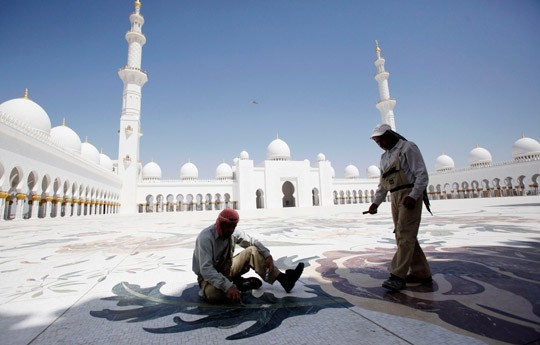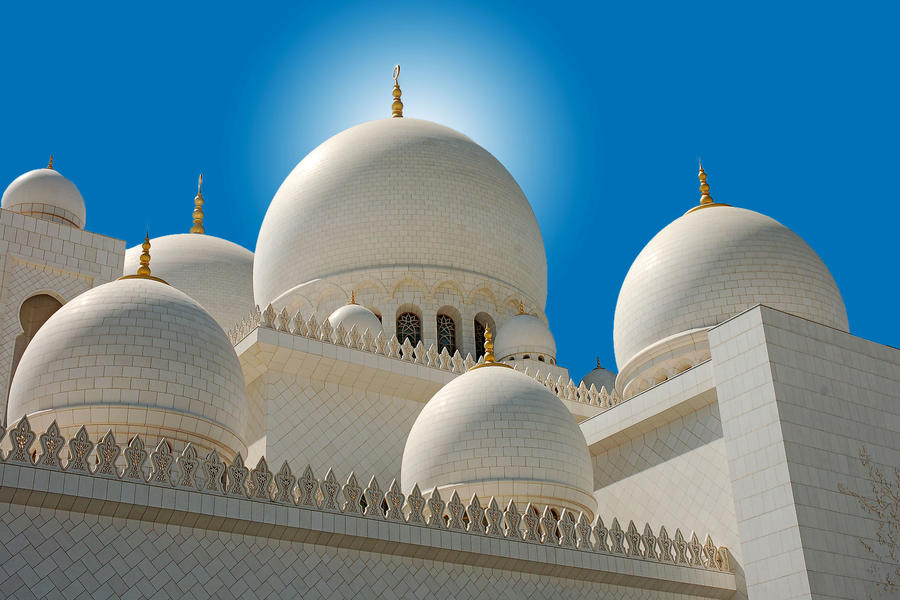
Msikiti wa Sheikh Zayed Uliopo Falme za Kiarabu (U.A.E) ni msikiti mkubwa kuliko yote katika falme za kiarabu na ni msikiti wa Nane kwa ukubwa duniani. Na inasadikika kuwa ndio msikiti mzuri kuliko yote Duniani, msikiti huu ulijengwa katika kumbukumbu za kumuenzi marehemu Sheikh Zayed Bin Sultan Al Nahyan ambaye alikuwa sheikh maarufu katika falme za kiarabu na ndie mwaanzilishi wa Falme za kiarabu
Ifuatayo ni historia fupi ya Msikiti wa Sheikh Zayed,
Only freshly fallen snow can reflect the light with more intensity. Like a mirage the building soars above the shimmering Abu Dhabi heat.
The 82 domes and 1,096 rooms are not an optical illusion, but belong to a mesmerizing mosque of superlatives on the edge of this city in the Gulf, a house of worship that seems to beckon visitors from afar.
To the faithful, this glorious building is known as the Sheikh Zayed Mosque, although its full title is Sheikh Zayed bin Sultan Al Nahyan, since it was named after the founder of the United Arab Emirates. He was the man who initiated this masterpiece in marble, the very whiteness of which is a symbol of peace to Muslims.
The blindingly white façade reminds onlookers of the Taj Mahal in India and the ethereal magnificence of the mosque is emphasized by the use of translucent stone from the finest quarries in Italy, Greece, India and China.
A total of 115,119 square metres of the stone was used for the four minarets and the outer facade alone. The Emirates' founding father ordered the same material for his burial place close by, a modest mausoleum where he was buried aged 86 on November 2, 2004, three years before the vast house of prayer was officially inaugurated.
When he laid the foundation stone in 1996, Sheikh Zayed marked the start of the construction of the largest mosque in the UAE and the third most sizeable in the Islamic world. The muezzin summons worshippers to a complex spread over 22,412 square metres. It can accommodate a total of 30,000 people, 23,000 of them within the cavernous main prayer hall which is also made of marble.
Only the best is good enough for a mosque of such enormous proportions. The building contains the world's largest hand-woven Persian carpet. A small army of 1,200 weavers toiled for 18 months to complete this floor covering, using up 38 tonnes of wool in the process. They used 2.2 billion knots in its creation and the carpet covers an area of 5,625 square metres.










